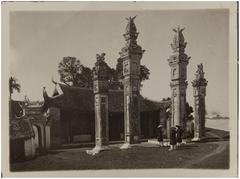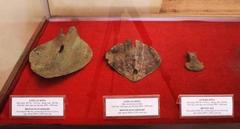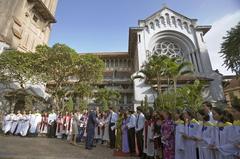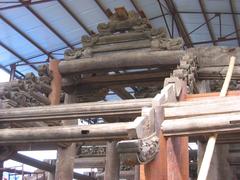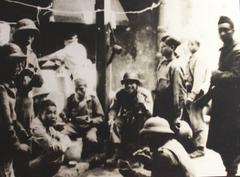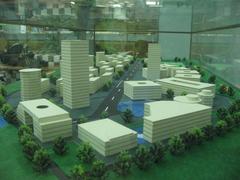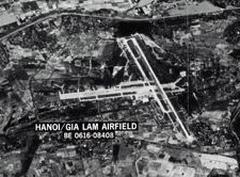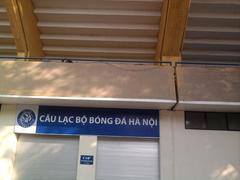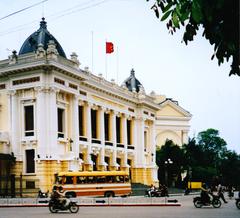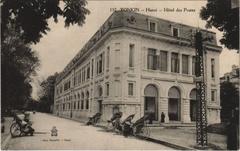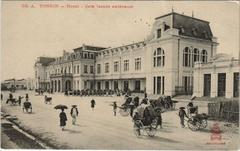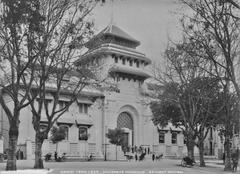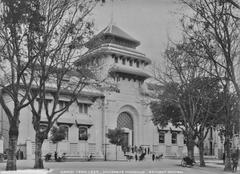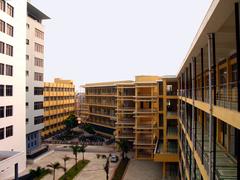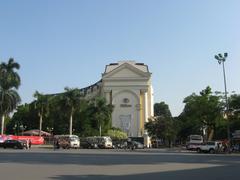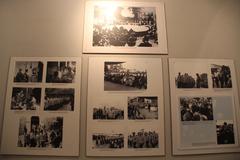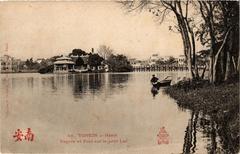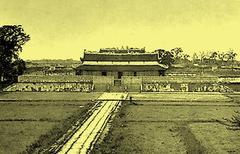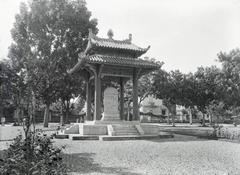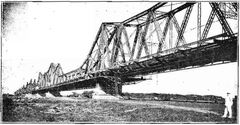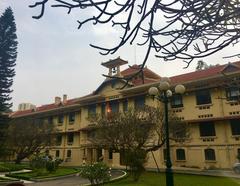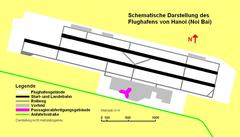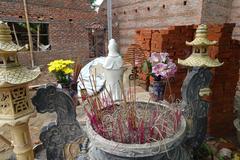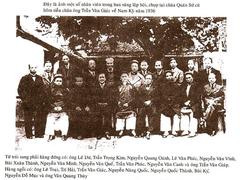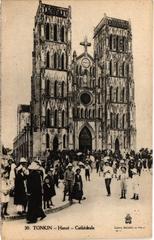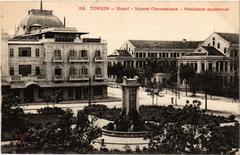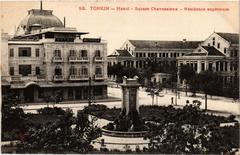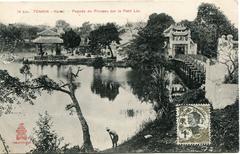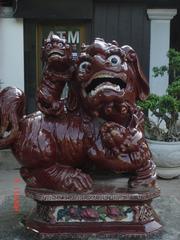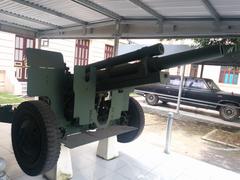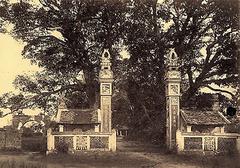Saint Paul Hospital Hanoi Visiting Hours, Tickets, and Guide to Historical Sites
Date: 04/07/2025
Introduction
Saint Paul Hospital in Hanoi, Vietnam, stands as a testament to the city’s blend of historical legacy and modern healthcare. Founded during the French colonial era as the largest Hôtel-Dieu in Indochina, the hospital’s origins are deeply tied to the Catholic missions that shaped early healthcare in Vietnam. Today, situated in the Ba Dinh District’s Điện Biên neighborhood—bordered by Nguyễn Thái Học and Chu Văn An streets—Saint Paul Hospital continues to serve as a major healthcare institution, renowned for its 24/7 emergency trauma services and multidisciplinary departments.
This guide offers a comprehensive overview of Saint Paul Hospital’s history, visiting protocols, travel tips, and nearby attractions, providing practical information for tourists, expatriates, and residents. For a more detailed history and visitor guide, please refer to Saint Paul Hospital Hanoi – History, Emergency Services & Visitor Guide.
Table of Contents
- Introduction
- Colonial Foundations and Historical Development
- Architectural and Urban Significance
- Evolution Through Vietnam’s Modern History
- Visiting Hours and Visitor Information
- Directions and Access
- Saint Paul Hospital’s Contemporary Role
- Cultural and Social Impact
- Practical Tips for Visitors
- Nearby Historical Sites and Attractions
- Frequently Asked Questions (FAQ)
- Summary and Final Tips
- References
Colonial Foundations and Historical Development
Established under the auspices of the Roman Catholic Archdiocese of Hanoi, Saint Paul Hospital was created as a charitable institution with a mission to serve the poor and vulnerable (Wikipedia: Hôpital général Saint-Paul d’Hanoï). Its location in the administrative and diplomatic core of Hanoi gave it urban prominence from the outset, with the campus reflecting a strong French architectural influence mixed with elements suited to its Vietnamese context.
Architectural and Urban Significance
The hospital complex features colonial-era buildings integrated with modern healthcare facilities. While significant upgrades have been made over time, many original facades remain, providing a tangible link to early 20th-century Hanoi and symbolizing the city’s gradual modernization under French rule.
Evolution Through Vietnam’s Modern History
After the colonial period, Saint Paul Hospital became part of Vietnam’s national healthcare system. It played a vital role during mid-20th-century conflicts, offering trauma and emergency care. Notably, in 2001, international organizations contributed over $302,000 USD in medical supplies to support the hospital’s emergency response capabilities (Wikipedia: Hôpital général Saint-Paul d’Hanoï). The hospital continues to expand and modernize, collaborating with other major Hanoi institutions for specialized referrals.
Visiting Hours and Visitor Information
- Visiting Hours: Patient family members are typically allowed to visit from 7:00 AM to 7:00 PM daily. General public access is limited to non-clinical, public areas for privacy and safety reasons.
- Visitor Access: While guided tours are not provided, respectful visitors may admire the site’s exterior and public spaces.
- Emergency Services: The hospital is equipped with a 24/7 emergency department, specializing in trauma care.
- Contact Information:
- Address: Nguyễn Thái Học Street, Điện Biên, Ba Đình, Hanoi, Vietnam
- Phone: +84 24 3825 3531 (English-speaking assistance may be limited)
- Official Website: [Currently unavailable; consult local health directories]
Directions and Access
Saint Paul Hospital’s central location makes it easily accessible via taxi, ride-hailing apps, and public buses. Main entrances are located along Nguyễn Thái Học and Chu Văn An streets. The hospital’s proximity to major landmarks such as the Presidential Palace and Ho Chi Minh Mausoleum further enhances its accessibility and appeal for visitors.
Saint Paul Hospital’s Contemporary Role
Today, Saint Paul Hospital remains a cornerstone of Hanoi’s healthcare landscape, catering to local and international patients alike. The hospital is recognized for its emergency trauma care, as well as for departments in surgery, pediatrics, and obstetrics. It frequently collaborates with other leading Hanoi hospitals, such as Bach Mai and Viet Duc, to provide comprehensive care.
Cultural and Social Impact
Rooted in its charitable, Catholic origins, Saint Paul Hospital is emblematic of resilience and cross-cultural heritage. The dedication of its staff to serve all patients—regardless of background—reflects the hospital’s longstanding ethos. The tranquil, tree-lined campus offers a marked contrast to the surrounding bustle of the Ba Dinh district, connecting Hanoi’s past and present.
Practical Tips for Visitors
- Dress modestly and follow hospital etiquette at all times.
- Photography within clinical areas is not permitted without authorization.
- Non-Vietnamese speakers should consider bringing a Vietnamese companion or using translation apps.
- Comprehensive travel insurance is highly recommended.
- Pharmacies are available on-site and in the immediate vicinity.
Nearby Historical Sites and Attractions
Saint Paul Hospital’s location is ideal for exploring several of Hanoi’s most significant historical and cultural sites:
- Presidential Palace
- Ho Chi Minh Mausoleum
- One Pillar Pagoda
- Vietnam Fine Arts Museum
These attractions provide deeper insight into the city’s rich heritage and are within walking or short driving distance from the hospital.
Frequently Asked Questions (FAQ)
Q: What are the visiting hours at Saint Paul Hospital?
A: Visiting hours for patient families are usually from 7:00 AM to 7:00 PM daily. Public tours are not available.
Q: Does the hospital accept international patients?
A: Yes, but English proficiency among staff may vary.
Q: Is the emergency department open 24/7?
A: Yes, emergency services are available at all times.
Q: Can visitors access all areas of the hospital?
A: No, only public areas are accessible; clinical areas are restricted to patients and staff.
Summary and Final Tips
Saint Paul Hospital Hanoi stands as an enduring symbol of the city’s historical depth and modern medical capacity. Visitors should observe privacy and cultural etiquette, take note of visiting hours, and appreciate the hospital’s unique place in Hanoi’s urban and social fabric. Its proximity to other major sites makes it a convenient starting point for exploring Hanoi’s historical and cultural attractions.
When seeking medical care or planning a visit, rely on up-to-date resources such as the Audiala app for real-time guidance. For comprehensive details, consult Saint Paul Hospital Hanoi – History, Emergency Services & Visitor Guide.
References
- Wikipedia: Hôpital général Saint-Paul d’Hanoï
- Tubudd: Healthcare in Vietnam
- Official Hanoi Tourism
- Onetrip with Local - International Hospitals in Hanoi


